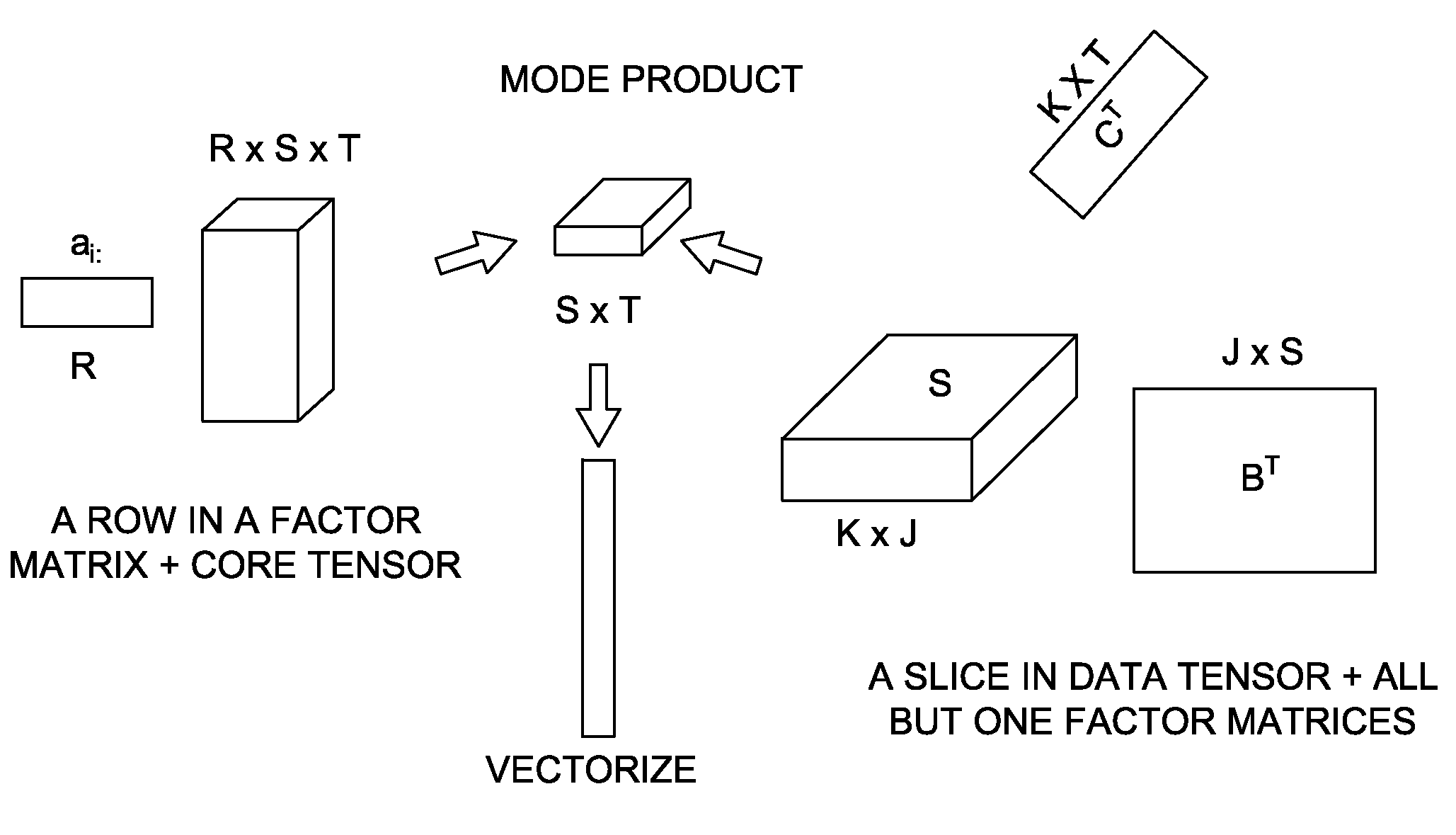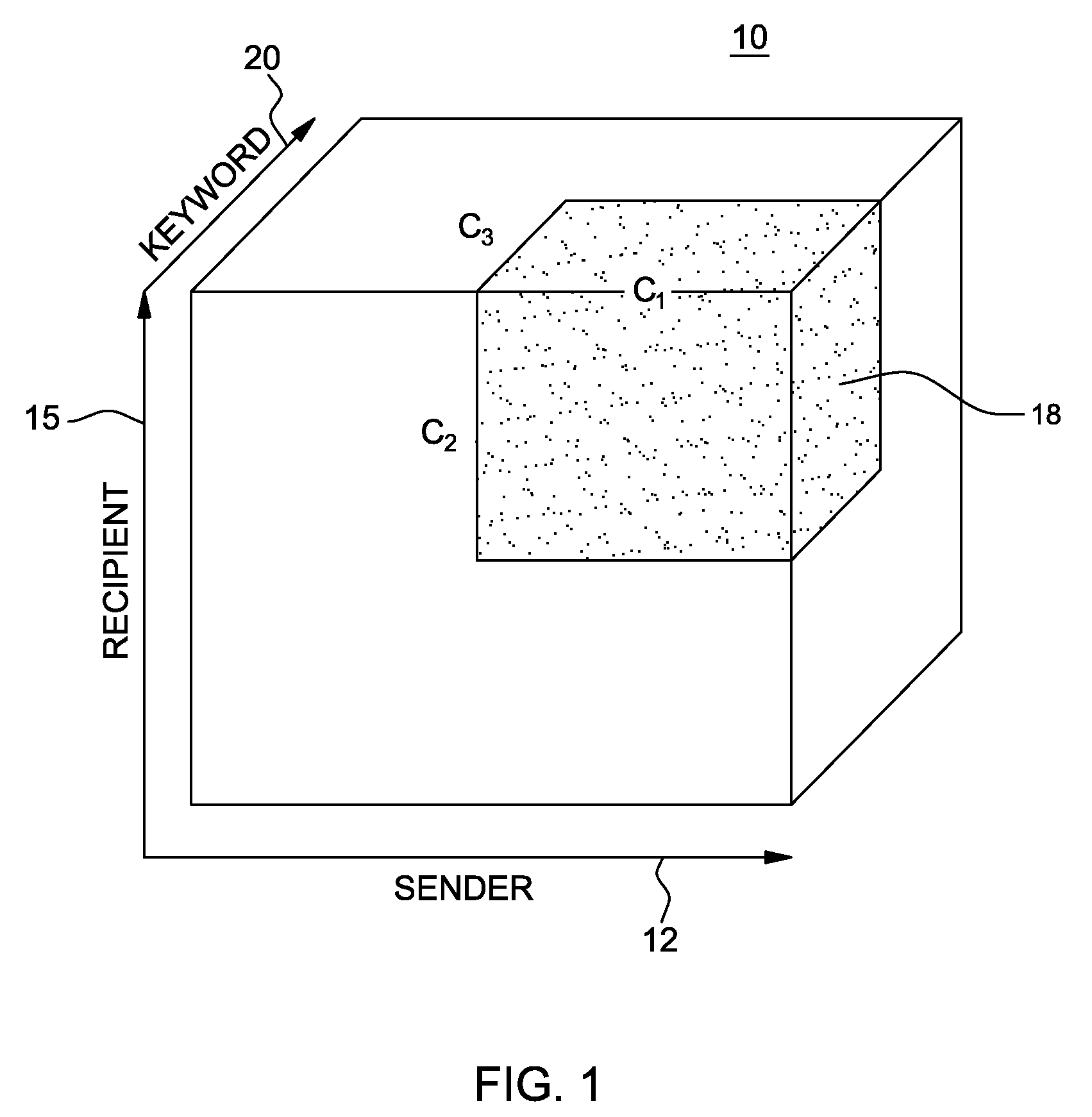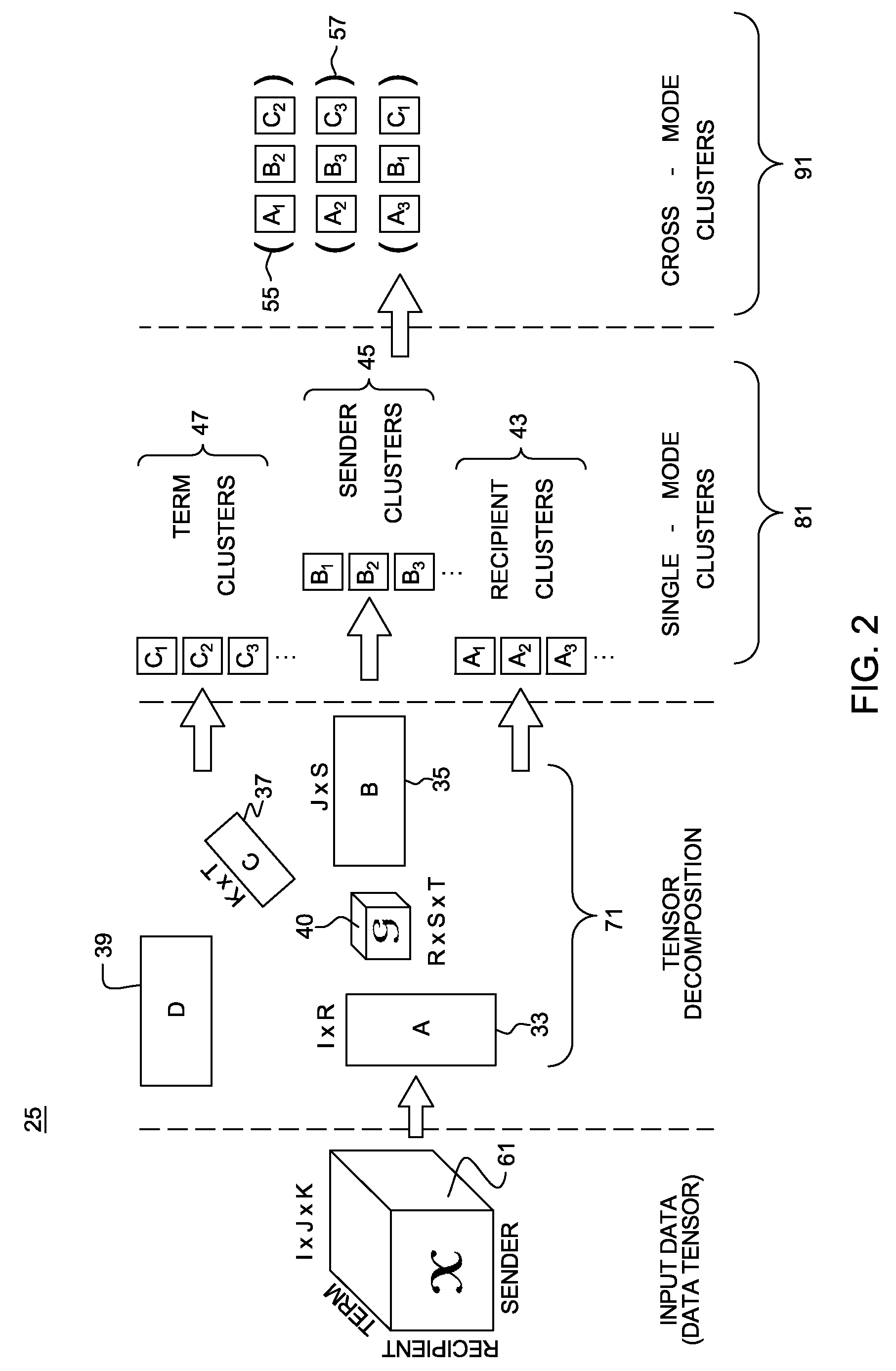Content-based and time-evolving social network analysis
a social network and content technology, applied in the field of social network analysis, can solve the problems of deterioration network and content aspects are rarely independent, and create overhead in terms of both performance and quality, so as to reduce the dimensional representation of the content-based network and facilitate the development of useful cross-mode clusters.
- Summary
- Abstract
- Description
- Claims
- Application Information
AI Technical Summary
Benefits of technology
Problems solved by technology
Method used
Image
Examples
Embodiment Construction
[0032]In the analysis of content-based network tensors, according to the invention, a two-level process is implemented. First, given a content-based network tensor, the content and network modes are analyzed in an efficient and robust manner to generate clusters. In this case, each mode of the tensor is modeled. Second, once the clusters on all modes are identified, the correlations across different modes are efficiently identified. In this case, those clusters are correlated for cross-mode patterns. For example, in the email tensor, groups of people (communities) and groups of keywords (concepts) are associated to find patterns of the form “who talks to whom about what.”
[0033]In the following description directed to performing tensor analysis, there is referred in Table 1 below the following generic symbols:
TABLE ISym.Definition∈x . . . x1Mdata tensorX(d)mode-d matricizationy ∈R1x . . . xRMcore tensorU(d) ∈Id×Rdmode-d factor matrix{U}all factor matricesU(i,:)the i-th row of a matri...
PUM
 Login to View More
Login to View More Abstract
Description
Claims
Application Information
 Login to View More
Login to View More - R&D
- Intellectual Property
- Life Sciences
- Materials
- Tech Scout
- Unparalleled Data Quality
- Higher Quality Content
- 60% Fewer Hallucinations
Browse by: Latest US Patents, China's latest patents, Technical Efficacy Thesaurus, Application Domain, Technology Topic, Popular Technical Reports.
© 2025 PatSnap. All rights reserved.Legal|Privacy policy|Modern Slavery Act Transparency Statement|Sitemap|About US| Contact US: help@patsnap.com



